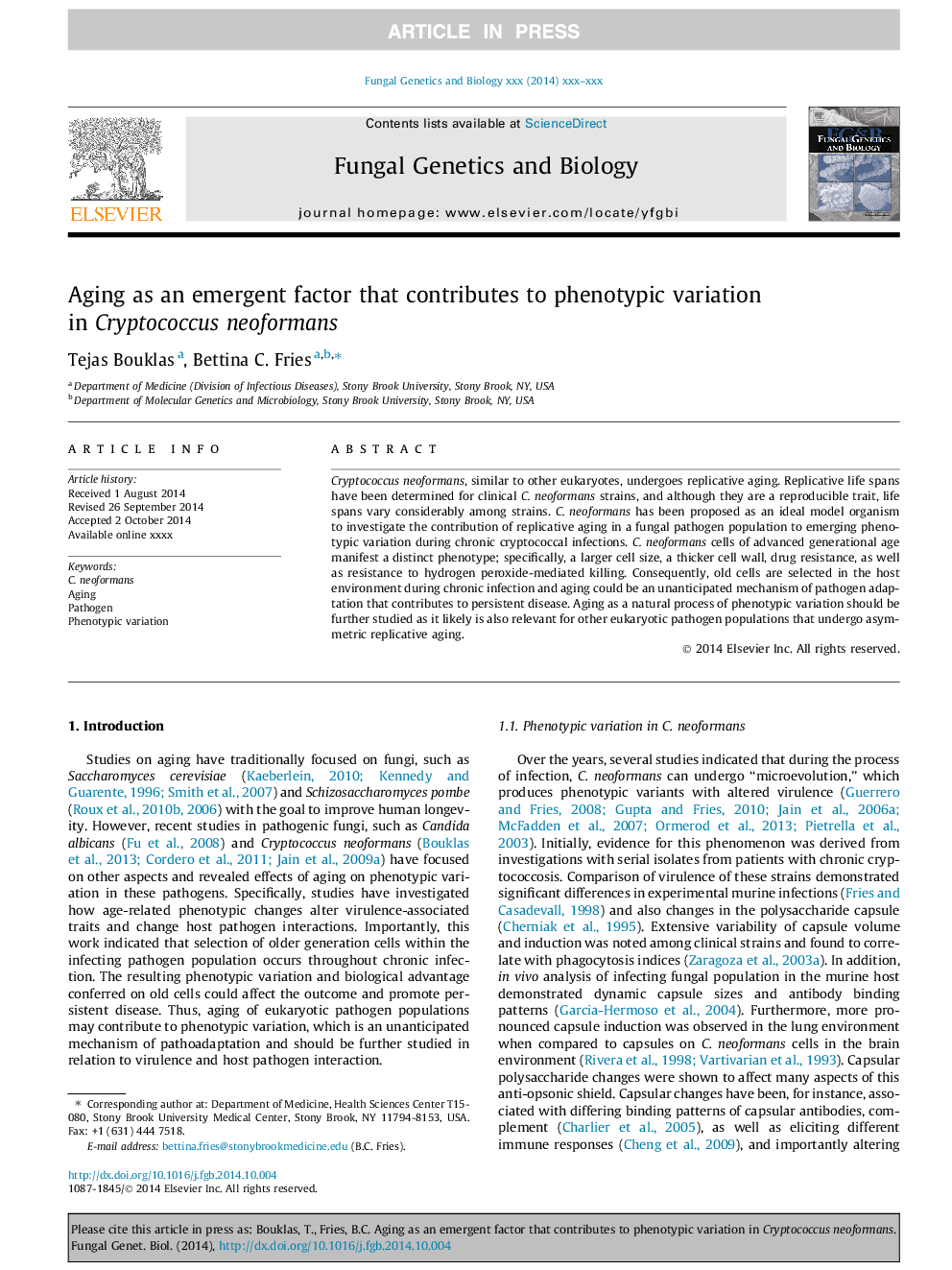| Article ID | Journal | Published Year | Pages | File Type |
|---|---|---|---|---|
| 8470770 | Fungal Genetics and Biology | 2015 | 6 Pages |
Abstract
Cryptococcus neoformans, similar to other eukaryotes, undergoes replicative aging. Replicative life spans have been determined for clinical C. neoformans strains, and although they are a reproducible trait, life spans vary considerably among strains. C. neoformans has been proposed as an ideal model organism to investigate the contribution of replicative aging in a fungal pathogen population to emerging phenotypic variation during chronic cryptococcal infections. C. neoformans cells of advanced generational age manifest a distinct phenotype; specifically, a larger cell size, a thicker cell wall, drug resistance, as well as resistance to hydrogen peroxide-mediated killing. Consequently, old cells are selected in the host environment during chronic infection and aging could be an unanticipated mechanism of pathogen adaptation that contributes to persistent disease. Aging as a natural process of phenotypic variation should be further studied as it likely is also relevant for other eukaryotic pathogen populations that undergo asymmetric replicative aging.
Related Topics
Life Sciences
Biochemistry, Genetics and Molecular Biology
Cell Biology
Authors
Tejas Bouklas, Bettina C. Fries,
